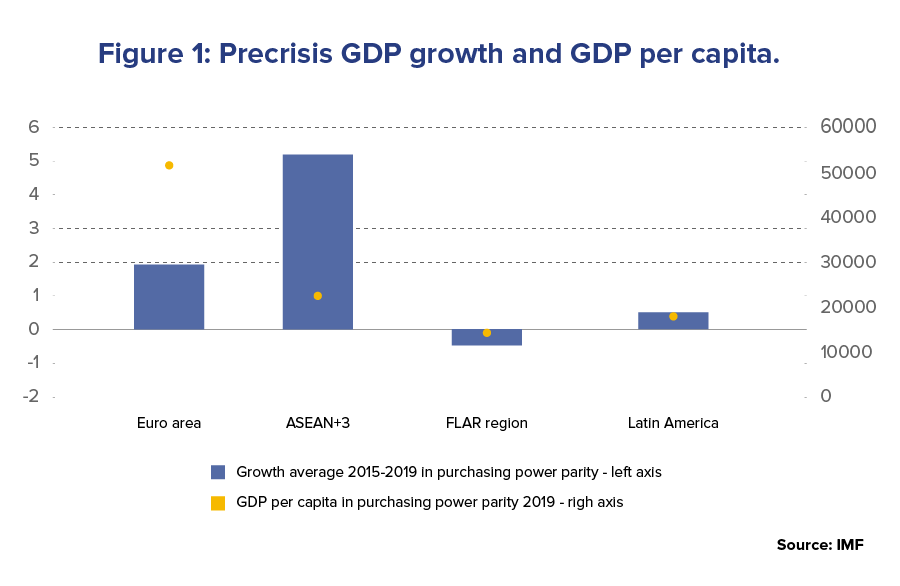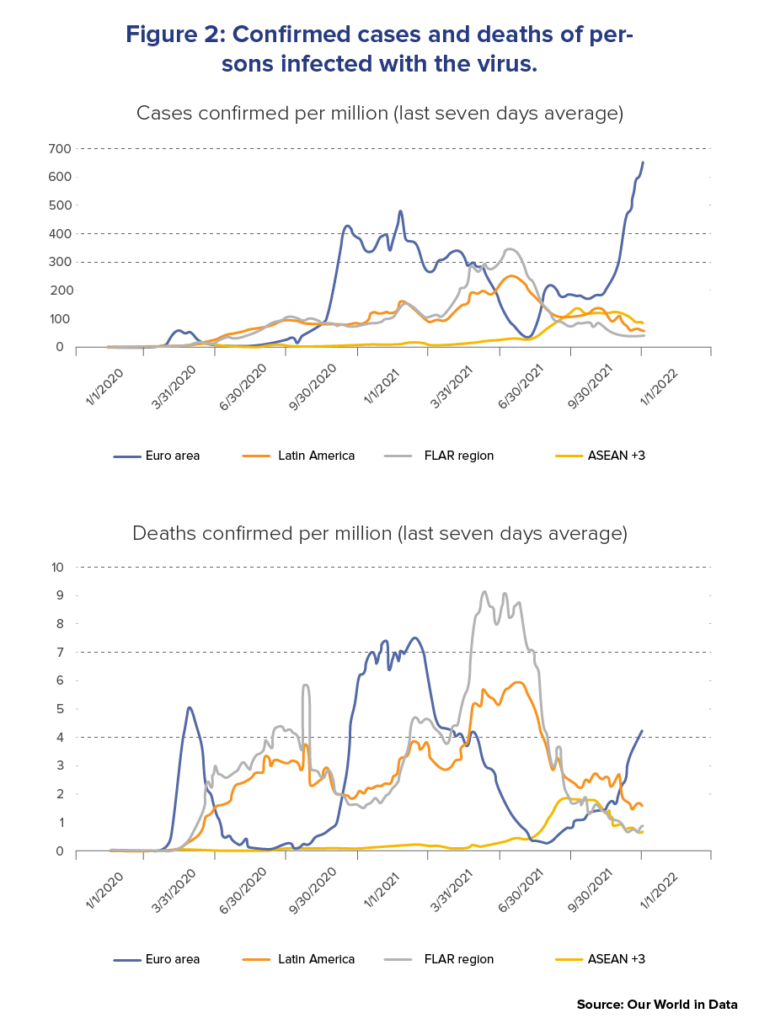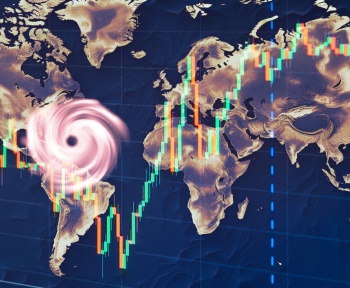Authors:
Carlos Giraldo – Chief Economist, FLAR.s Económicos del FLAR.
Iader Giraldo – Principal Economic Researcher
The most significant health crisis of the last 100 years has had profound impacts throughout the different countries and regions of the world. Its effects have depended on the preconditions exhibited by the different territories, the force with which the pandemic occurred, and the responses of the economic and health authorities to counteract them. Latin America, Europe, and Asia are three regions that have presented particular effects and behaviors, which are detailed in an article recently published jointly with other regional financial arrangements (RFAs) from Asia, Eurasia, Europe, and the Middle East (Regional responses to the COVID-19 crisis: a comparative study from economic, policy, and institutional perspectives), from which we will present a comparative framework of the effects and responses to the current crisis in these three regions.
The initial conditions in Latin America, Europe, and Asia were very different during the pandemic. On the one hand, economic growth in Latin America and Europe was low, while Asia had the highest growth rates among the different regions of the world. On the other hand, Europe had the best data, followed by Asia, with Latin America in last place in terms of GDP per capita (Figure 1). The crisis arrived in our region after five years of low economic growth when it was in a weaker economic position than the other two regions of the world.
The pandemic affected the three regions differently. The number of infections and deaths per million inhabitants in Latin America and Europe was highest, especially in the first phase of the pandemic. At the same time, Asia had the lowest infection and mortality rates (Figure 2). Correspondingly, government and health authorities in the first two regions took strong measures to restrict mobility and the concentration of people for prolonged periods, which had a major negative impact on the production and demand for goods and services. These measures were less prolonged in Asia due to the rapid control and, therefore, the pandemic had a lesser impact.
Beyond the spread of the virus and confinement measures, the performance of external demand, commodity prices, and breaks in global production chains directly affected production levels in the different regions. In this regard, and consistent with the lesser impact of the pandemic, Asia was the region that suffered the least economic impact worldwide, while Europe and Latin America were the regions with the greatest deterioration in production (Figure 3).
All of the above shows the heterogeneity of the factors that led to a particular impact of the pandemic among the different regions of the world. However, it is evident that Latin America has had great difficulties facing this shock, as it received it with weak initial conditions in economic growth. In addition, the pandemic hit our region harder because it has a combination of structural disadvantages compared to our peers in Europe and Asia. Compared to Europe, although we share strong containment measures, our hospital capacity, social safety nets, and level of employment formality are much lower, so the impact of the pandemic was greater. Compared to Asia, we share high levels of informality, but the levels of infection, mortality, and confinement measures were more prolonged in Latin America, with a greater negative effect on production and employment.
The response of governments, central banks, and multilateral organizations to counteract the crisis was rapid and diverse among regions and in magnitudes adjusted to their respective capacities for action. From the global financial safety net (GFSN), the different RFAs acted promptly, reviewing their instruments and lending policies to member countries and their leverage levels, providing technical advice, and increasing collaboration with the IMF, among other activities. For Latin America, FLAR introduced a transitional external support credit line for COVID-19, increased its potential leverage, and authorized the implementation of a new program to increase its lending capacity. To date, only FLAR has received a request for financial assistance (liquidity credit from Ecuador, in the second half of 2021), while the Asian and Eurozone RFAs have not received any request for financial assistance during the COVID-19 crisis. This can be explained by global (e.g., abundant international liquidity) and regional reasons.
Going forward, the current challenge is to achieve a sustained recovery despite the many difficulties that may arise, taking advantage of the experiences and lessons learned from the crisis we are still experiencing. Latin America is in an economic recovery process, with significant challenges in terms of unemployment, informality, inequality, and social security.
In terms of the GFSN and the macroeconomic and financial stability of the region, this is an opportunity to continue strengthening the network and strengthening FLAR as the regional financial agreement that provides an additional layer of protection against possible macroeconomic and financial shocks.
If this crisis has shown us anything, it is that risks never disappear, and the best way to manage them is by safeguarding a network that provides stability to the region with preventive and timely actions that contribute to orderly, gradual, and credible macroeconomic adjustment processes.
[*] The opinions and points of view expressed are the sole responsibility of the authors, and not of FLAR or its administrative bodies.
References
FLSchiliuk, G., T. B., Lapointe-Rohde, J., Palaiodimos, G., Attia H., Hinojales, M. M., Kho, C., Vasilev, G., Kostanyan, T., Carvalho, A., Guerzoni, B., Giraldo, C., and Giraldo, I. (2021). Regional responses to the Covid-19 crisis: a comparative study from economic, policy, and institutional perspectives.







